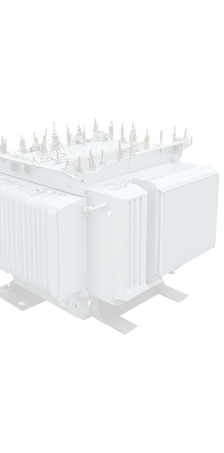Working with transformers presents a high-risk environment, especially for Transformer Technicians handling live equipment, high voltages, or transformer removals. Whether you’re maintaining active systems or managing scrap transformers, safety should always be the top priority. At JJ TRANSFORMERS, we believe that proper safety protocols not only protect lives but also ensure efficient operations during buying, selling, recycling, or transporting transformer equipment.
In this article, we’ll explore essential electrical safety protocols for transformer technicians, and how companies involved in transformer recycling, buying transformers, or working with used transformers for sale can maintain the highest standards of electrical safety.
1. Pre-Inspection and Lockout-Tagout (LOTO) Procedures
Before any maintenance or removal activity begins, technicians must perform a comprehensive inspection of the transformer unit. One of the most critical safety steps is initiating the Lockout-Tagout (LOTO) procedure. This involves:
- Shutting off power at the source.
- Locking the circuit breakers or switches in the OFF position.
- Tagging the equipment to notify others that work is in progress.
These practices are especially vital when performing transformer removal, where accidental energizing can lead to electrocution or equipment damage.
2. Proper Use of Personal Protective Equipment (PPE)
Transformer technicians must wear industry-standard PPE for all tasks involving electrical components. This includes:
- Flame-resistant clothing (FR-rated)
- Insulated gloves and boots
- Face shields or arc flash hoods
- Safety goggles and hearing protection
When handling scrap transformers or decommissioned equipment, protective gear is essential to prevent exposure to hazardous substances such as oil leaks or insulation materials.
3. Testing Before Touching
One of the golden rules of electrical safety is: “Test Before You Touch.” Using appropriate voltage detection tools, technicians should verify that no electrical current is present—even after de-energization procedures. This is a crucial habit, especially when working with units intended for resale as used transformers for sale or processing during transformer recycling.
4. Safe Handling of Transformer Oil
Transformer oil used in cooling and insulation can be flammable and toxic. Technicians must:
- Avoid skin contact using chemical-resistant gloves.
- Work in well-ventilated areas to reduce inhalation risks.
- Immediately clean up any leaks or spills with proper absorbent materials.
If oil-contaminated units are being sold or processed, safety measures must be in place, particularly when dealing with clients who want to sell transformers in large quantities.
5. Grounding and Bonding Equipment
Before performing repairs or disconnections, transformers and associated equipment must be properly grounded to eliminate the risk of static discharge or accidental shocks. Temporary grounding kits must be installed during testing and servicing.
Technicians removing or working on units sold to transformer buyers must ensure all grounding has been verified to prevent life-threatening accidents.
6. Environmental and Site Safety Measures
Many transformers are located outdoors or in high-risk industrial areas. Transformer technicians must:
- Use barriers or signage to prevent unauthorized access to the work area.
- Avoid working in wet conditions to minimize electrical hazards.
- Secure tools and materials from falling or shifting, particularly during transformer removal.
These protocols also play a critical role in managing transformer inventories meant for recycling or resale.
7. Handling Old or Scrap Units
Technicians often encounter aged or damaged equipment when dealing with scrap transformers. These units may have degraded insulation, rust, or other hazards.
Safety measures include:
- Conducting visual assessments before any contact.
- Isolating hazardous components.
- Using cranes or lifts rather than manual handling for large units.
These practices protect both the technicians and the integrity of inventory being processed for clients looking to sell transformers or buy transformers.
8. Training and Certification
All technicians should be trained in:
- High-voltage safety
- CPR and first aid
- Arc flash awareness
- OSHA and NFPA 70E standards
JJ TRANSFORMERS ensures that every technician who handles used transformers for sale or oversees transformer removal is fully certified and equipped to perform their duties safely and effectively.
9. Use of Insulated Tools and Testing Equipment
Insulated tools must be used at all times, particularly when dealing with energized parts or post-installation testing. Voltage testers, ground resistance testers, and insulation resistance meters should be calibrated regularly and checked before each use.
Technicians evaluating or prepping units for resale or transformer recycling must maintain the highest equipment standards to ensure both operational and safety reliability.
10. Emergency Preparedness
In the event of an arc flash, shock, or other incident:
- Emergency stop systems should be in place.
- First aid kits and fire extinguishers must be readily accessible.
- Team members should be briefed on evacuation and emergency response protocols.
This level of preparedness is especially critical during high-volume operations involving transformer buyers or clients who buy transformers in bulk from remote or industrial locations.
Final Thoughts
Electrical safety for transformer technicians is not optional—it’s essential. Whether your team is handling used transformers for sale, managing scrap transformers, or assisting clients who want to sell transformers or buy transformers, robust safety protocols ensure smooth operations and protect everyone involved.
At JJ TRANSFORMERS, safety, quality, and environmental responsibility are at the heart of what we do. From efficient transformer removal to sustainable transformer recycling, we prioritize secure handling practices for every unit and every client.



